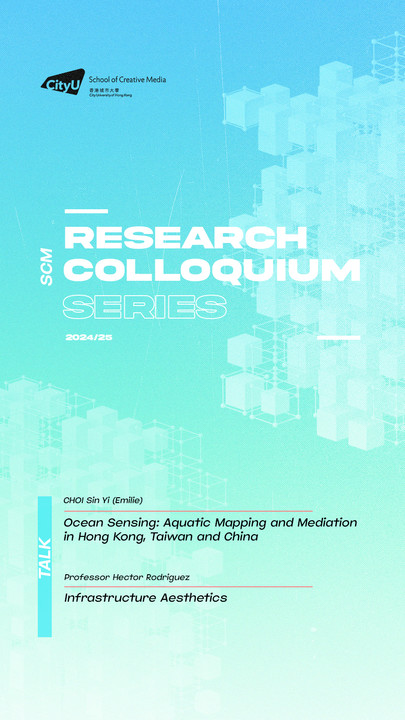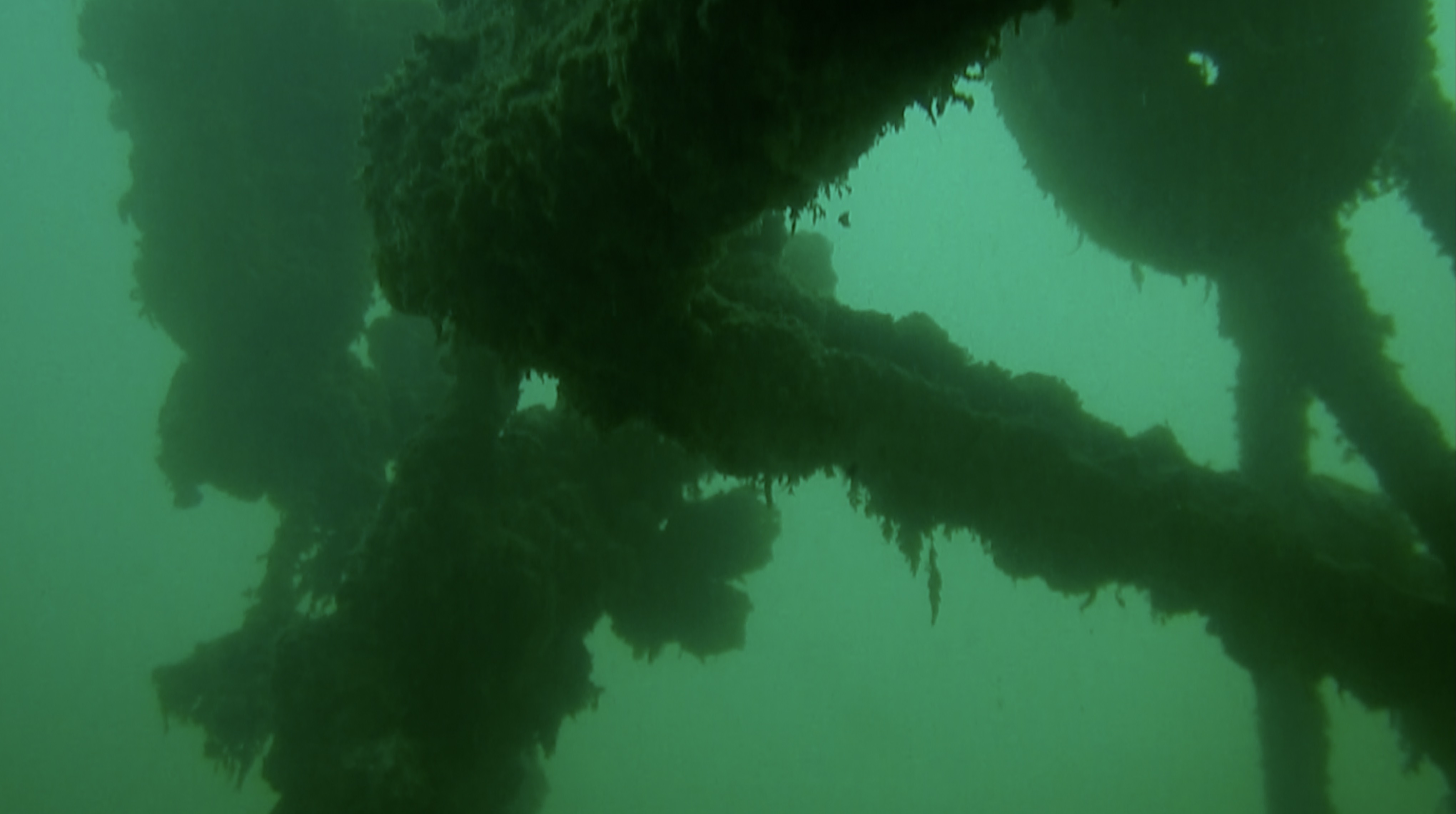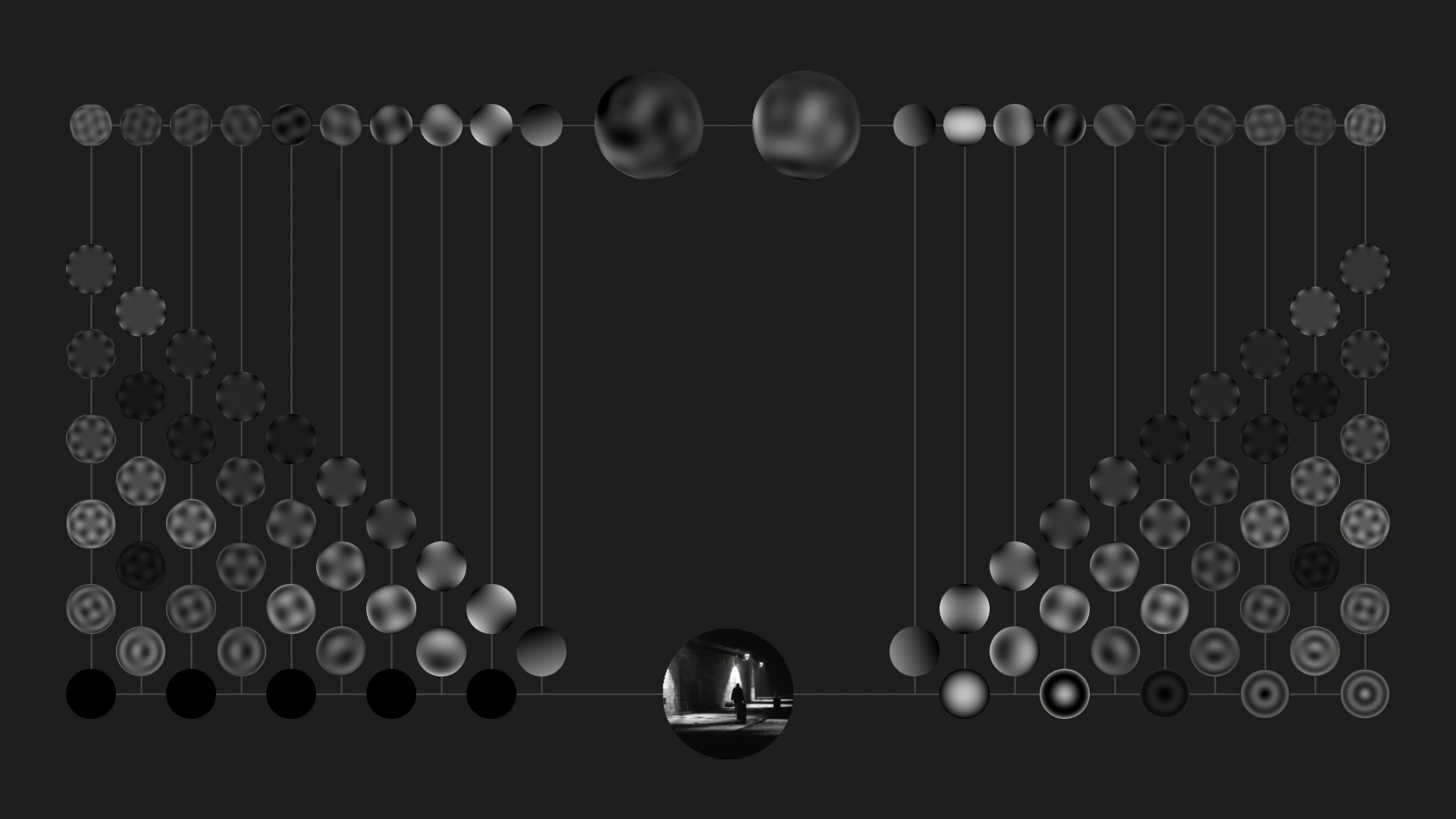9th SCM Research Colloquium 2024/25
Seminar
15 Apr 2025
3:30 p.m – 5:15 p.m
M6050 Screening Room 1, Level 6, CMC
|

|
SCM Research Colloquium is a presentation platform for sharing and discussing recent projects by researchers, faculty members, and guests of the School of Creative Media. As a monthly session open to all for ideas exchange and intellectual conversations over coffee/tea and light refreshments, each session features two speakers and Q&A sessions hosted by Prof. Espen Aarseth and Prof. Richard Allen.
For our 9th and final session of this semester’s series, we invite Professor Hector Rodriguez and PhD Candidate Choi Sin Yi (Emilie) to share their ongoing research on Infrastructure Aesthetics, and Ocean Sensing.
Seminar 9
1 April 2025, 3:30 p.m – 5:15 p.m
Ocean Sensing: Aquatic Mapping and Mediation in Hong Kong, Taiwan and China
CHOI Sin Yi (Emilie)
How do we perceive the ocean using a variety of “technics” and “techniques”, and how have human-nature-technology relations been reconfigured across the oceanic environments? These questions guide my dissertation research, which explores the intersection of blue humanities, visual culture, infrastructure and media technology in Hong Kong, Taiwan and China. By applying the methodology of socio-technical imaginaries, I aim to scrutinize how oceanic environments are shaped through sensing and mediation. Building on Giuliana Bruno’s concept of “environmentality,” this study redefines the term “environment” – it has been reinvented by indicating its potentialities of making sense of how a technically-inscribed ocean is formed and perceived. This framework seeks to broaden the ontological understanding of the ocean, shifting from a cinematic space to various scale of volumetric mediation.
In this vein, this study explored how the ocean is sensed and mediated from different agencies – including the environmental scientists, the filmmakers, and the media artists. I first examine varied mechanical visions and its relationship with monitoring and investigating the environment to construct the conceptual framework of media studies in the realm of undersea. I further illustrate the vibrant mediation of the ocean, which evoke new socio-material relations and imaginaries, through the prism of artworks by Law Yuk-mui and Cai Guo-jie, as well as the Chinese documentary, “Underwater China”. These works, informed by new imaginaries of surveying and investigating techniques and knowledge, prompt a reassessment of our engagement in the “blue frontiers” across the situated context of ocean.

Victoria East, Law Yuk Mui (2017)
BIO : CHOI Sin-yi (Emilie) is a Ph.D. candidate at the School of Creative Media, the City University of Hong Kong. Her endeavors span academic research, art criticism, artistic research and curatorial initiatives. Her research interests primarily revolve around film and media studies, visual culture, eco-criticism, and digital studies. Her work has been published in Film Quarterly, Modernism/modernity and she has presented various research projects at renowned institutions, including transmediale and the EYE Filmmuseum. She is also now a board member of Videotage and Unlock Dancing Plaza in Hong Kong.
Infrastructure Aesthetics
Professor Hector Rodriguez
Contemporary artists often borrow materials from outside of art, particularly from science and engineering. The use of these materials often gives rise to new artistic genres. Computer art, internet art, and bio-art are obvious examples. In some cases, the introduction of new technics into an established artistic practice triggers fundamental questions about its nature. I propose to focus discussion around the question of what it means to understand a work of art. Any attempt to tackle the question of understanding, I will argue, must appeal to the concept of an artistic medium. Art is always to be understood, if it is understood at all, as a mediated practice. But the concept of a medium is not a simple one. It involves two layers. The first comprises what could be called the medium proper, i.e., the conventions in virtue of which the work bears meaning. The second layer encompasses the system of technical vehicles that the artist manipulates to produce an art statement, such as, the film stock, camera lenses, etc.
There is, however, a third element that plays a crucial, although often overlooked, role in art processes. This element is the supporting infrastructure, the various technical and material elements that the artist does not directly manipulate but on which she depends to be able to produce work at all; for instance, the transportation networks used to move materials and works to the sites of production and exhibition. This artistic infrastructure is not typically regarded as part of the artistic medium. It is invisible to many art critics and observers. It nonetheless constitutes the base on which the entire cultural superstructure stands.
By reflecting on the mediated status of art, I will elaborate a proposal for an artistic program, best characterized as a poetics of infrastructure. This program calls for artists to rethink the medium in which they work by establishing circuits between the three levels: medium, vehicles, and infrastructure. More specifically, the poetics of infrastructure reframes the medium of an artistic practice by asking whether some of the vehicles and infrastructures of that practice could be understood as integral to the medium proper, i.e., as essential to and constitutive of the practice

Still from the algorithmic video installation Z, Hector Rodriguez (2018)backyard of ZAC
BIO : Hector Rodriguez is a media artist and theoretician working at the intersection of computer vision, machine learning, visual art, and the humanities. His work investigates the specific possibilities of information technologies to reconfigure our experience of moving images and our relationship to film history. He integrates visual art with mathematics and computer science, exploring the tension between digital abstraction and visual representation.
Rodriguez’s artworks have been shown at venues such as the WRO Biennial, the Saatchi Gallery, the Friedericianum Museum, Siggraph Asia, and the Loop Video Art Festival. His essays on games/play studies, film and philosophy, and cinema history have been published in various journals, including Screen, Games Studies, and Cinema Journal.